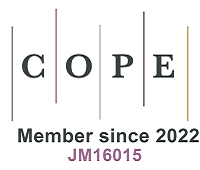Achieving near-zero thermal expansion over a wide temperature range in (Hf,Ta)(Fe,Cr)2 alloys
Abstract
Zero thermal expansion alloys possess significant potential for applications in aerospace, electronics, and optical instruments due to their volume remains nearly constant despite temperature changes. Regulating and exploring zero thermal expansion alloys is crucial to mitigating thermal strain and stress. This study successfully adjusted negative thermal expansion alloy (Hf, Ta)Fe2 to zero thermal expansion over a wide temperature range by optimizing its composition and controlling the magnetic phase transition. Moderately substituting Cr for Fe transformed the giant negative thermal expansion (ΔT=15 K) into near-zero thermal expansion (ΔT=200 K). High-resolution synchrotron X-ray diffraction, macroscopic magnetic measurements, and linear thermal expansion measurements were employed to investigate the crystalline structures, magnetic properties, and thermal expansion of Hf0.84Ta0.16Fe2-xCrx (0 ≤ x ≤ 0.25). The alignment of the magnetic phase transition and anomalous thermal expansion temperature ranges demonstrates the essential role of spin-lattice coupling. This work offers valuable insights into regulating zero thermal expansion behavior and explaining the applications of magnetic negative thermal expansion alloys. This advancement will promote their use in high-precision instruments, aerospace, microelectronics, and advanced manufacturing, enhancing device reliability and performance, particularly in extreme temperature environments.
Keywords
Near-zero thermal expansion, magnetic phase transition, negative thermal expansion, kagome structure
Cite This Article
Wang X, Ai M, Long F, Zhong H, Lu H, Zhou C, Chen J. Achieving near-zero thermal expansion over a wide temperature range in (Hf,Ta)(Fe,Cr)2 alloys. Microstructures 2025;5:[Accept]. http://dx.doi.org/0.20517/microstructures.2025.31














